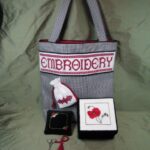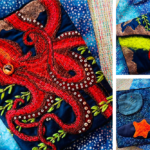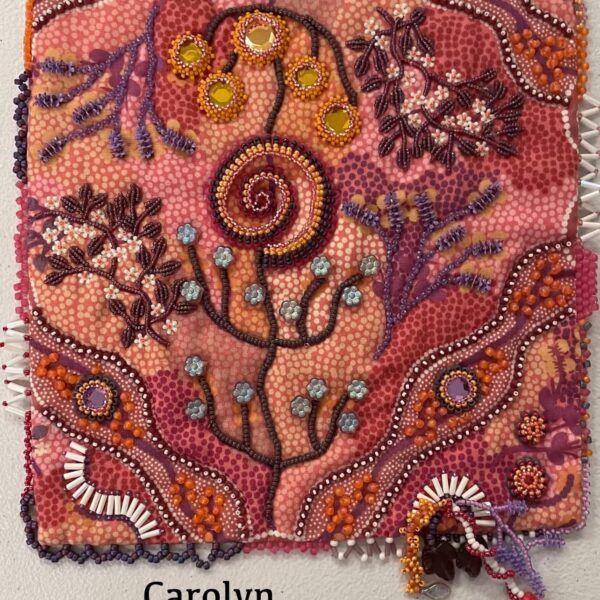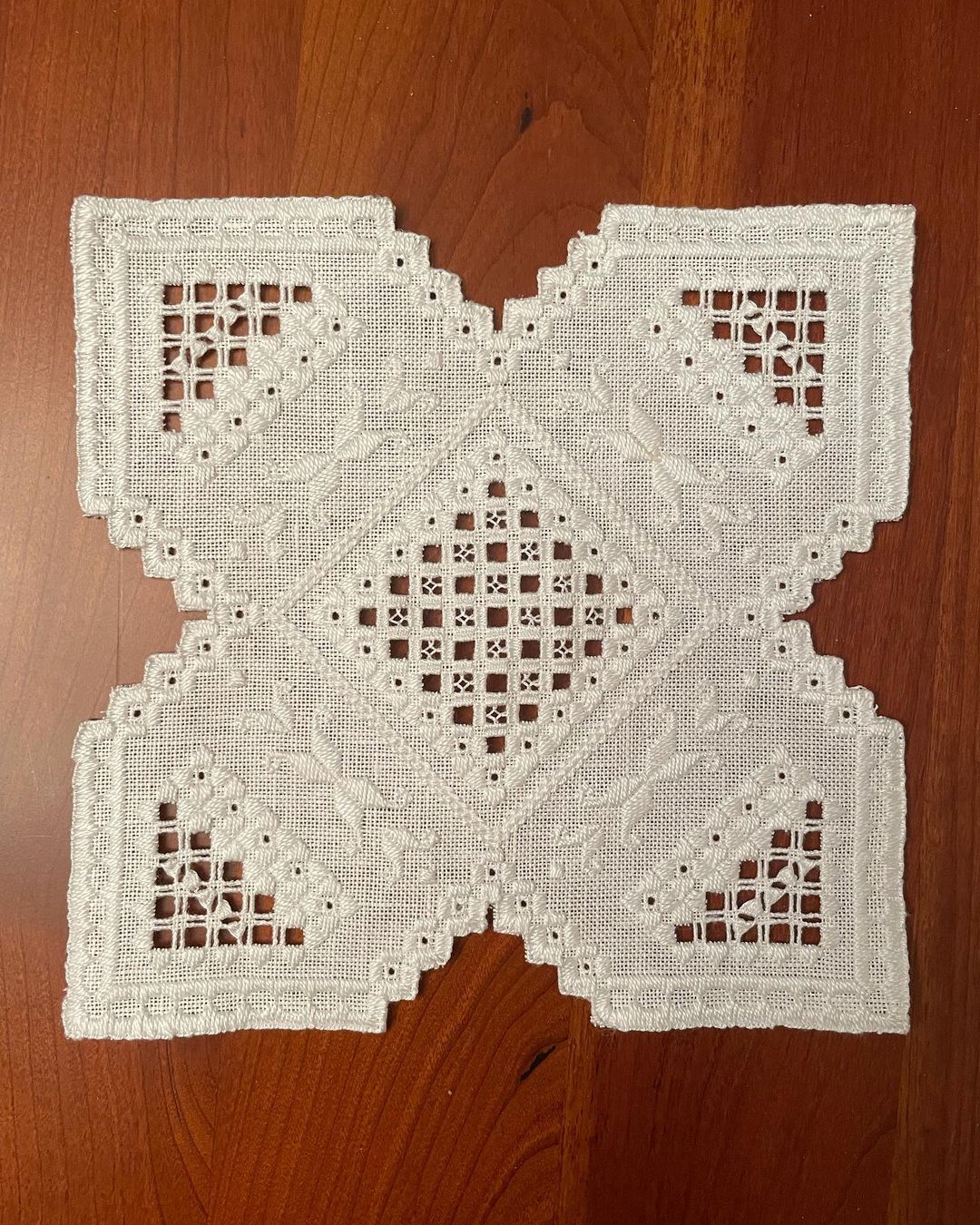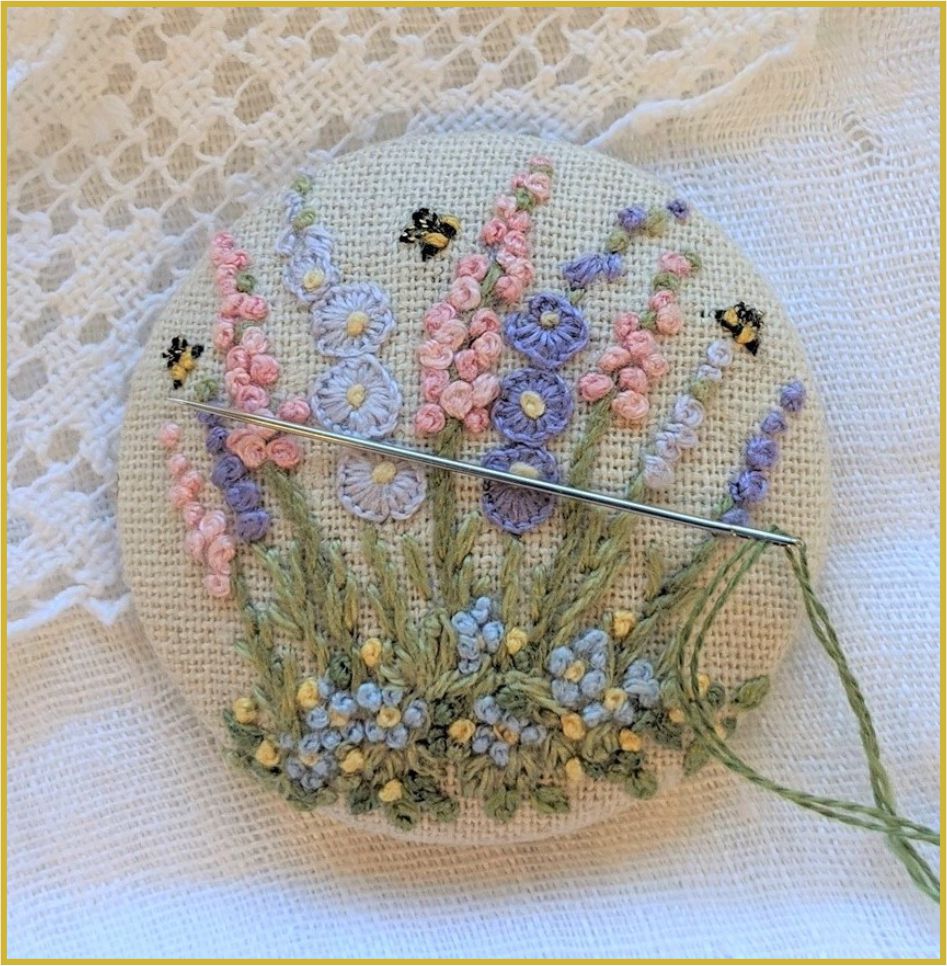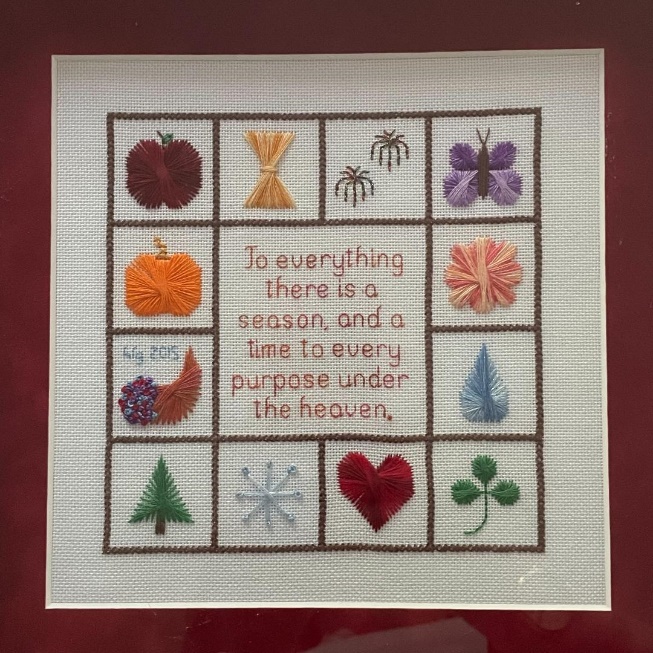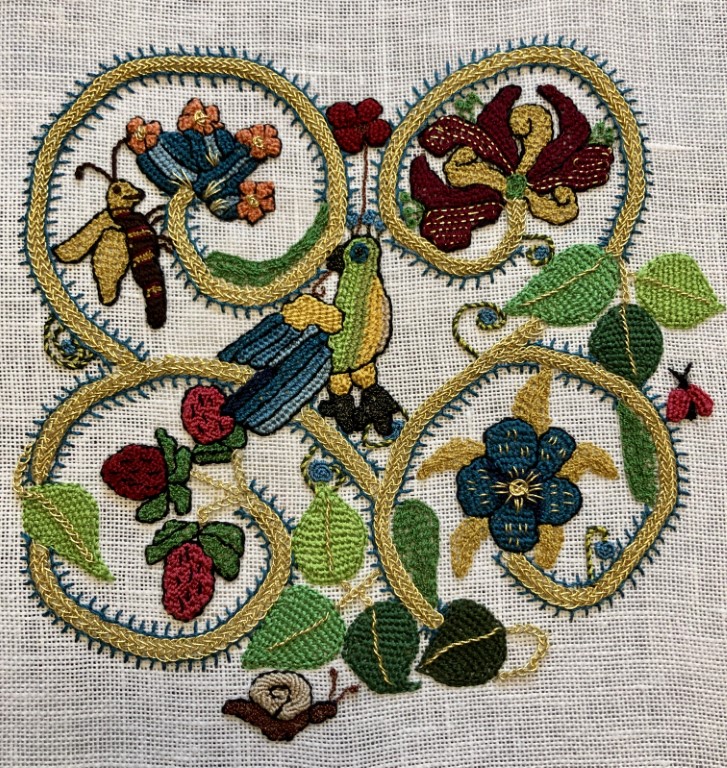
This month EGA was delighted to sit down with Lauren Yeager, a textile artist with a background in fashion design and years of experience studying and teaching various styles of needlework techniques with the Royal School of Needlework, the Parisian art school Ecole Lesage, the San Francisco School of Needlework, and the Japanese Embroidery Center in Atlanta, Georgia.
You received a BFA in Fashion Design from Columbia College Chicago. What inspired the transition to hand embroidery?
I always enjoyed the hand-work aspects of creating quality garments, and this extended especially to embellishments and embroidery in particular.
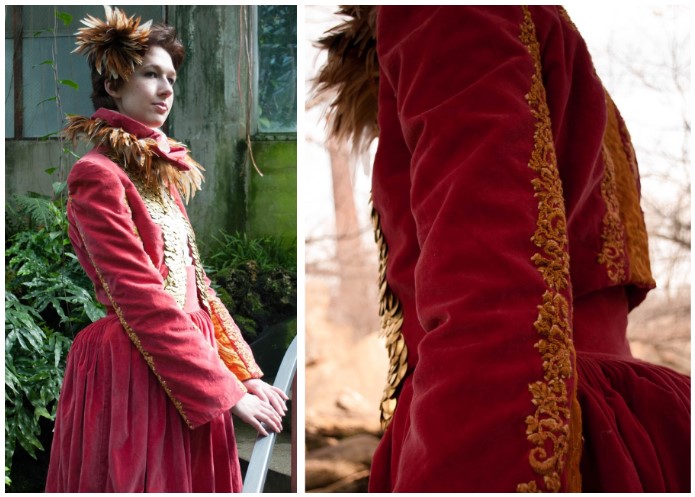
At the time when I became interested in learning more about historical sewing, I was involved in theatrical costume-making. While I enjoyed these projects, the main focus was always achieving the sought-after look through shortcuts, so that the costumes could be quickly produced. Of course, this made sense for what these costumes’ ultimate function would be, but working within these constraints often made me feel like I was missing out on the real tactile experiences that I was after as a maker.
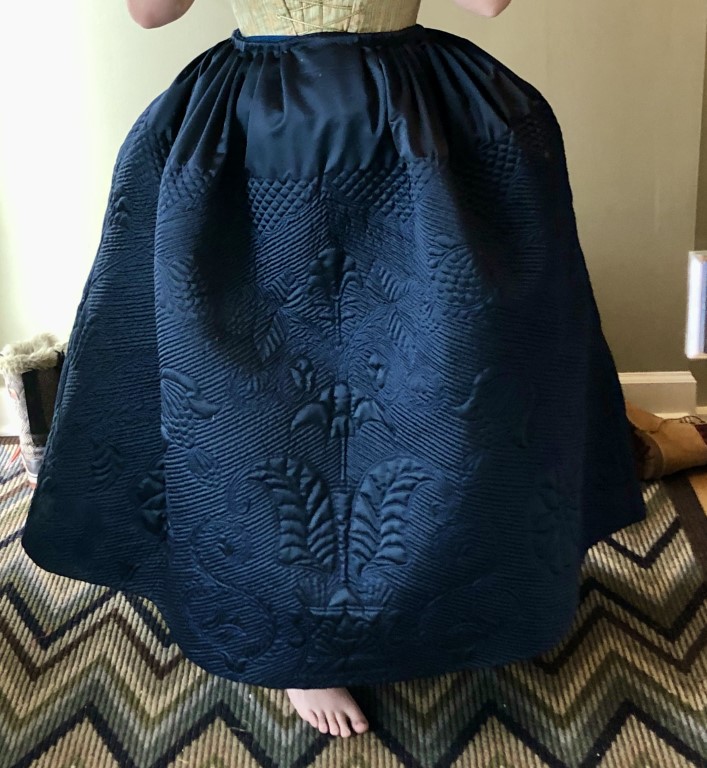
Shortly after earning my degree, I had an opportunity to study with the Royal School of Needlework. Here, I was able to explore the creative process within the context of craftsmanship, and it really deepened my appreciation for the complexity and artistry involved. Embroidery as a subject is both specialized and expansive, contemporary and historical, solitary and communal, always moving with the individuals that create it, and I love engaging with it every day.
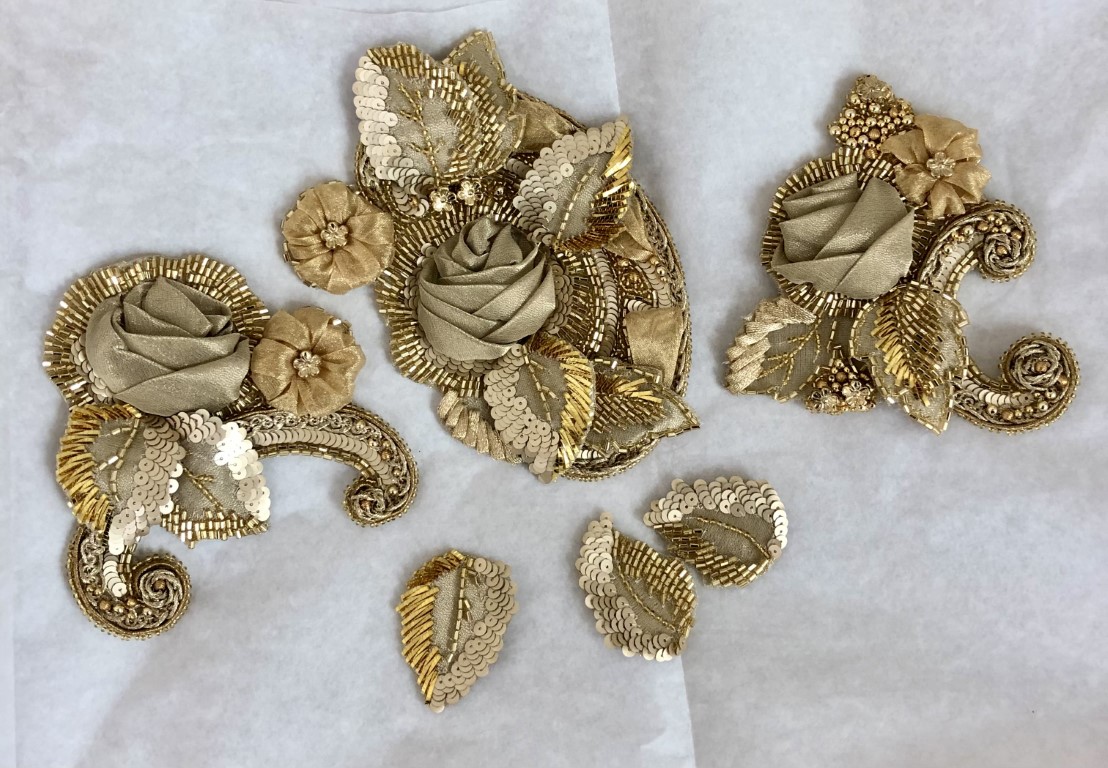
You also worked with visual artist Nick Cave as a core team production assistant, producing “Soundsuits” and installation pieces. What was that experience like? Did you learn anything important about your own artistic process through that work?
Working in a professional production studio is quite a learning experience for many reasons, and I think it is especially helpful for anyone looking to make their art practice viable as a means of earning a living. For myself, I found working in a studio both grounding and inspiring. You can see firsthand the broad possibilities of what can be achieved in a creative business and what is required to sustain its success, and you can also learn about the limitations.
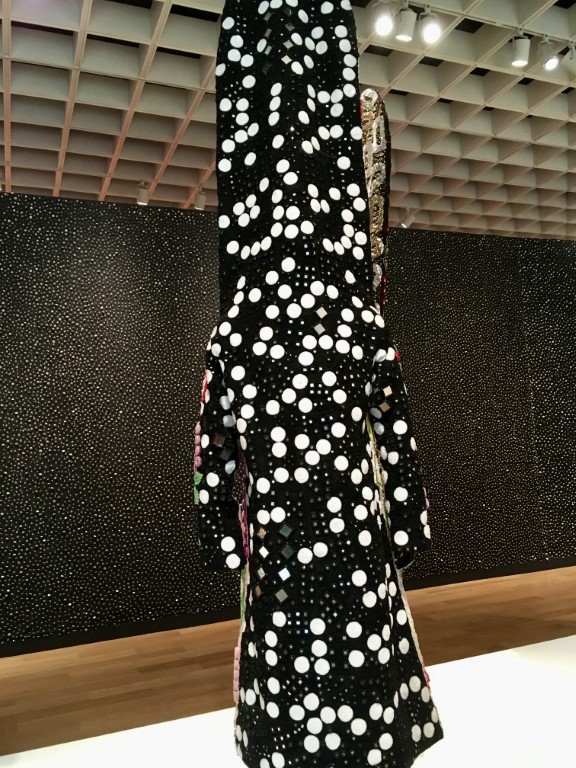
Practice is another great benefit of working in production. If your job is something similar to what you do creatively, you are constantly improving your process in terms of learning efficiencies, how much output you produce in a given workday, and again–limits. Knowing what is reasonable to promise in a given timeframe and how to price whatever that may be might seem like common sense, but there can be a big learning curve for someone who doesn’t have a lot of practical experience. Many people find themselves in the position of having all aspects of the business’s operation their own responsibility. All of that is a great deal of work, but having a strong sense of what you personally can produce in a day is really helpful as a foundation.
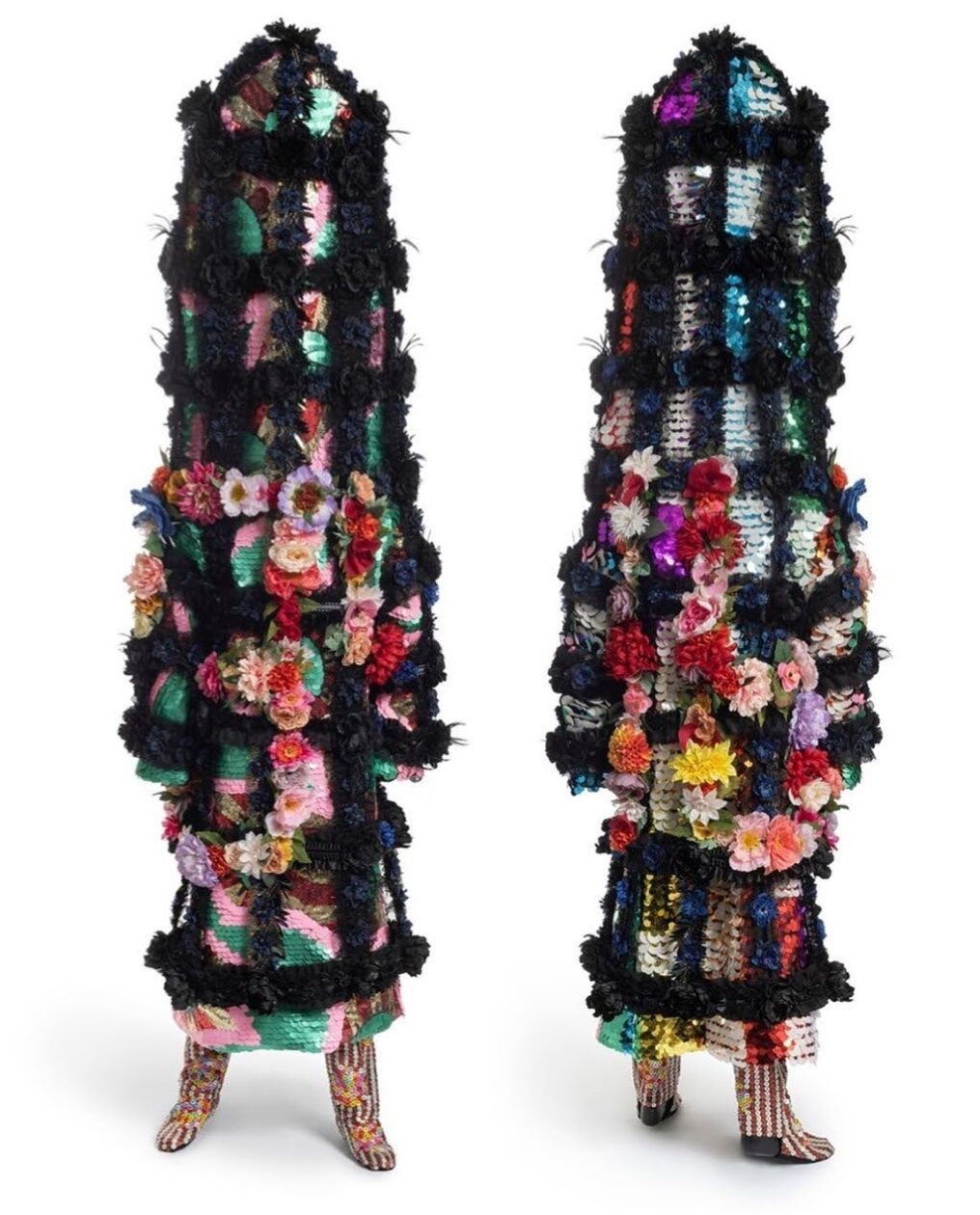
You’ve studied many different embroidery techniques and styles, including needle painting, goldwork, crewelwork, Japanese embroidery, tambour embroidery, surface embroidery, and pulled and drawn whitework. Do you have a favorite style or technique?
It is always good to learn something new in my opinion, and at one point in my life, I remember being told to take advantage of opportunities as they arise, and be open to them. In practice for me this means: why not give this technique a go? I might love it, I might not, but at least I’ll know I gave it a try.
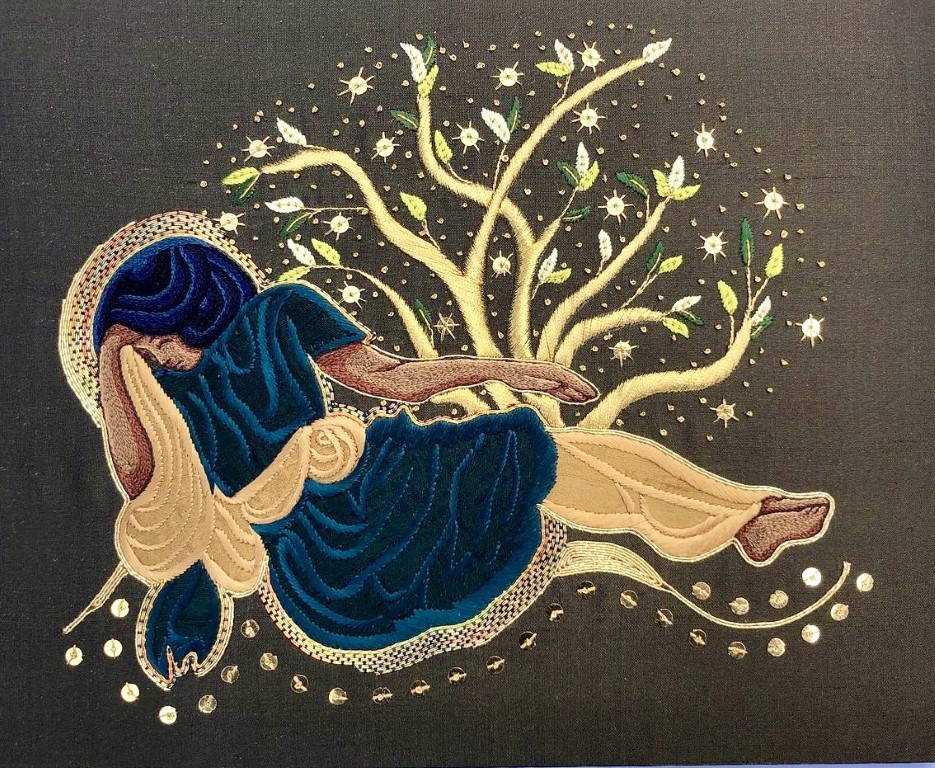
I’ve found that learning different techniques and applications helps broaden my ideas of what can be achieved artistically through embroidery. So my favorite techniques would be combinations of things that have distinctly different textures and heights. I enjoy seeing the juxtaposition. Since embroidery is very often like drawing with thread, I like taking advantage of the fact that embroidery adds dimension in a way that flat drawings or paintings cannot.
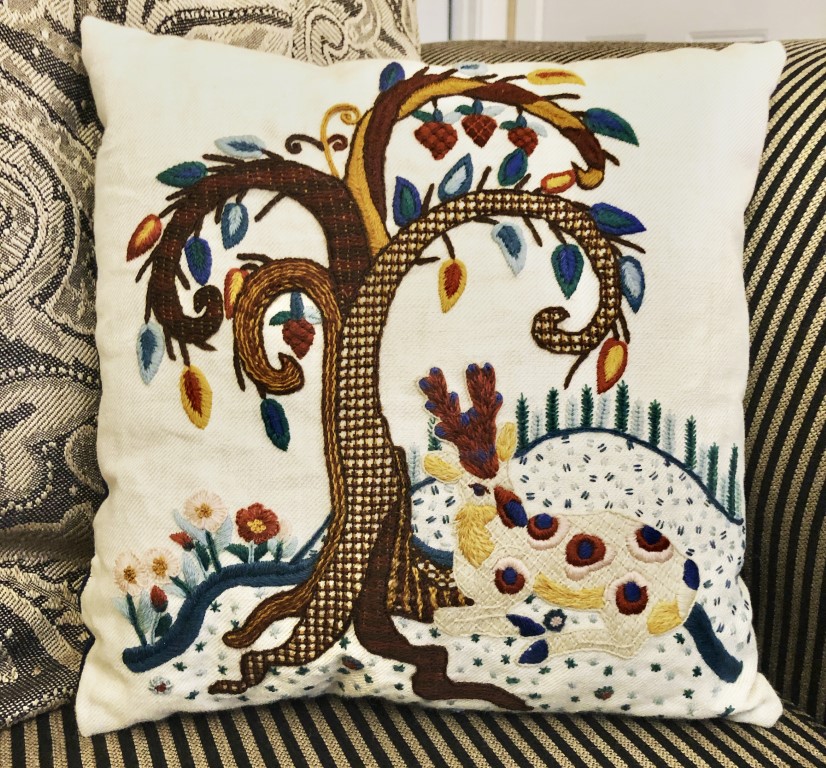
Where do you find inspiration for your designs?
I prefer representational work, and designs that have a historical feel. So my inspirations generally come from photographs I’ve taken in real life, especially featuring flowers, plants, or birds. I’ll see some kind of pattern or silhouette I like at the moment with a technique in mind, then I create a composition that I think will feature the technique well.
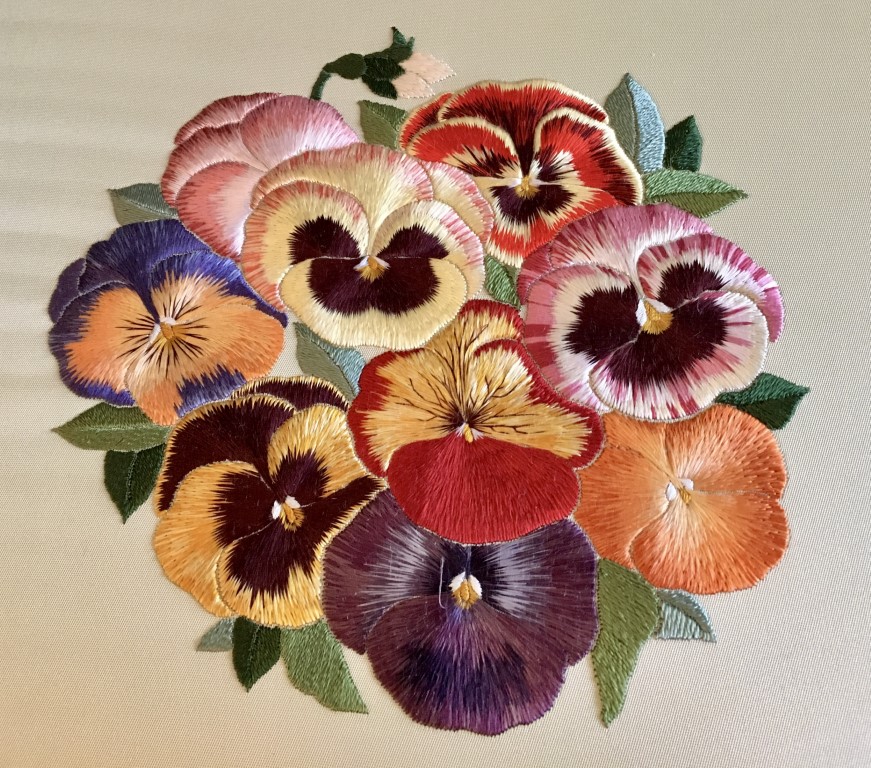
What does your design process look like?
Usually, I make a series of drawings, working until I feel it is right for what I’m trying to feature. Then I clean up the drawing digitally, so a fine line screen can be made up for printing. Then I map out a technique chart and a color palette. If I have the option to use a variety of materials, I like to use various kinds of silk threads in a fairly wide range of colors. For kit designs, I try to be mindful of limiting my color range, and stick to cotton threads to control costs.
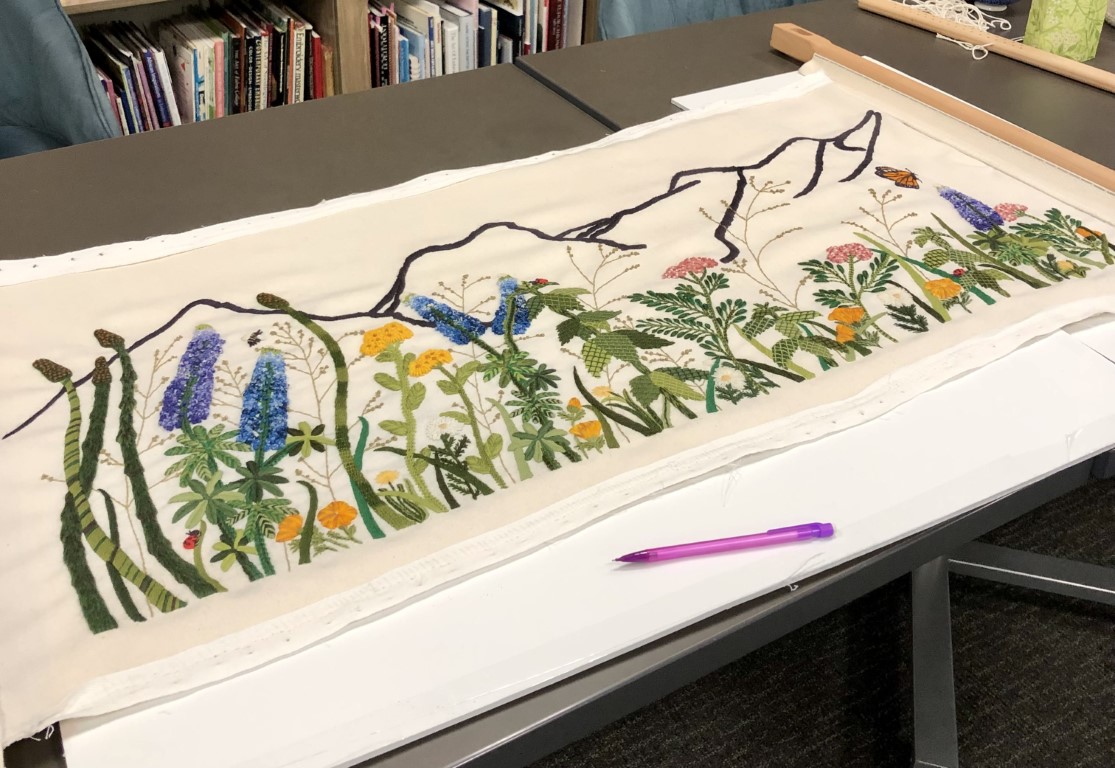
Do you have a favorite design? Why is it your favorite?
I don’t really think I have a favorite design; I make a lot of things every year, and I honestly start to forget everything I’ve done until I bring out sample boxes and look at what’s in them. I usually mentally check out of a piece once it’s been finished. I tend to focus my attention on the current projects I’m working on.

What is your favorite piece of needlework advice?
Focus on accuracy first when learning new techniques or using new materials. Speed will naturally follow after.
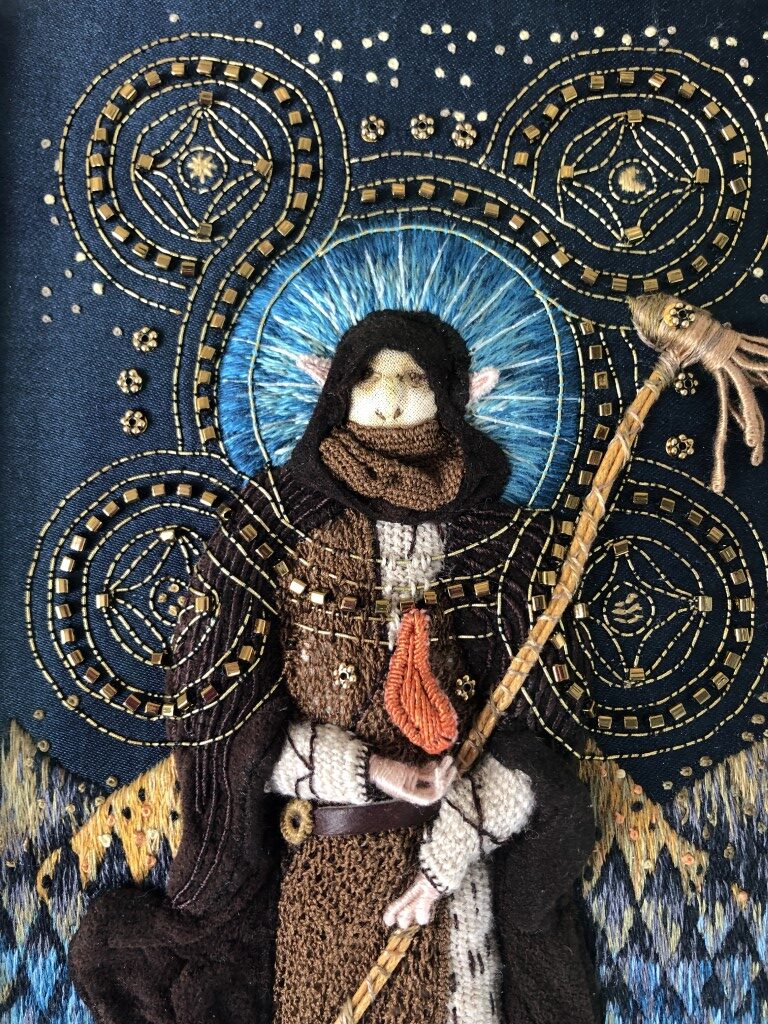
Do you have a daily/weekly/monthly practice that you’d recommend to other embroiderers interested in honing their craft?
When starting out, even if your schedule is full, stitching for 20 minutes a day, three times a week will help develop dexterity and muscle memory. Doing this consistently will mean that you remember how to execute techniques and won’t need to relearn them over and over.
Know the limits of how long you can reasonably work. It’s not running a marathon, but repetitive motion injuries do happen if you’re not accustomed to plugging in a lot of hours in one go. Whatever workspace you have, make it as comfortable for yourself as you can so you don’t end your workday in pain. And if you want to be able to stitch for long periods of time in a day, work your way up to it so you don’t exhaust yourself.
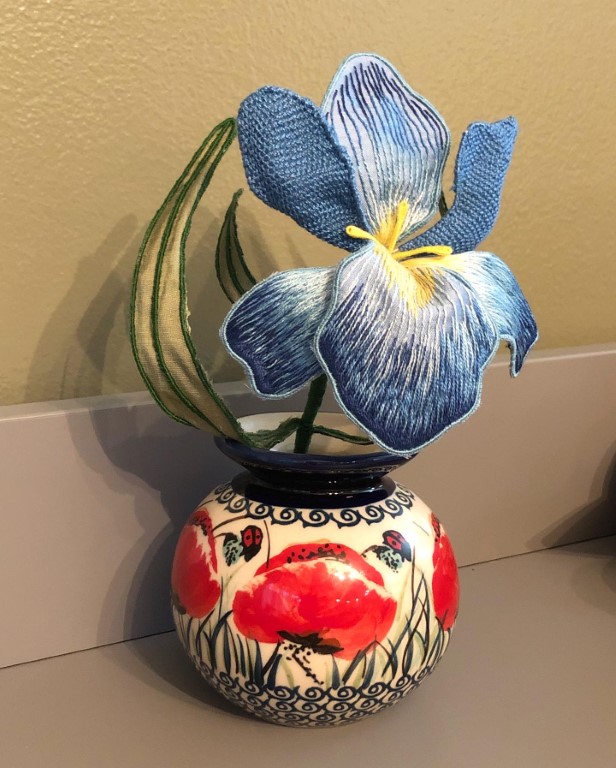
What crafting or color trends (if any) are you drawn to right now? Are you working on anything exciting?
To me the trends are less important than making sure my work conveys the mood I want. I often depict flora and fauna, most of which is associated with specific seasons and therefore color palettes, and I find keeping these color palettes in mind can really enhance the composition.
Currently I am in between formal projects, so I’m mostly doing research for future classes.
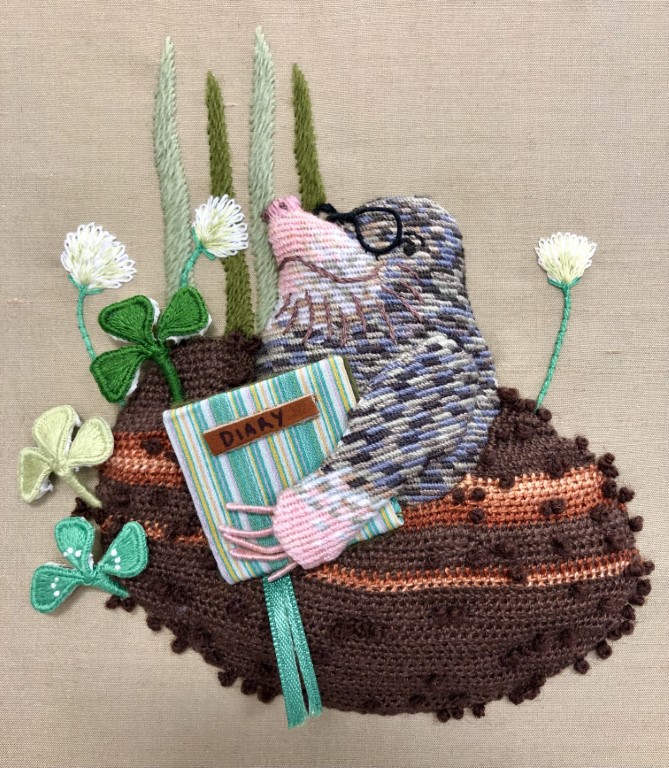
Thank you to Lauren Yeager for providing this wonderful insight into her portfolio of work. Interested readers can find Lauren on Instagram at @elbaembroidery and learn more about her classes and commissions at elbaembroiderydesigns.com.


